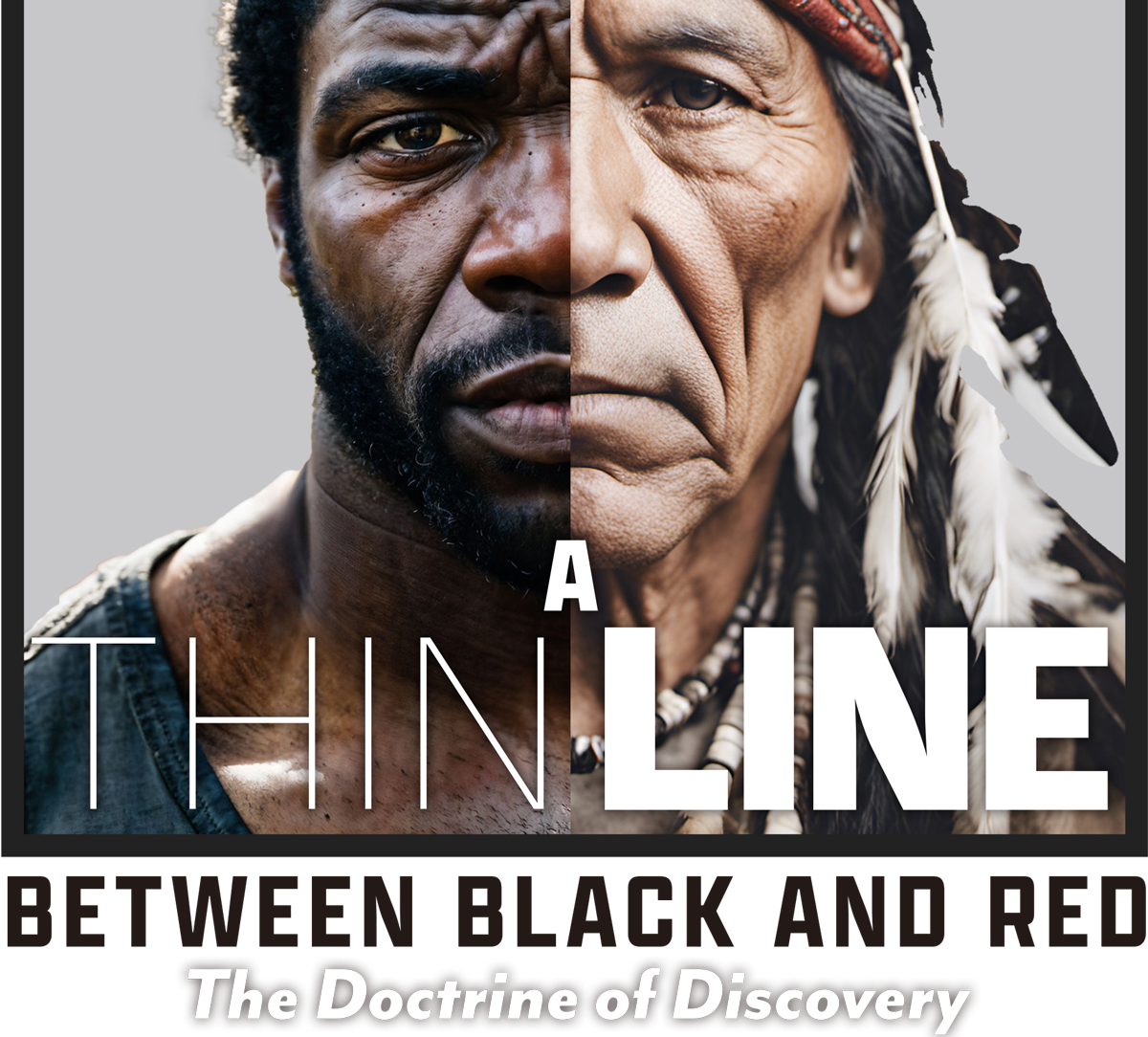
Same man that stole the land from Chief Black Smoke!
– Common, “Black America Again”
W.E.B. DuBois was referring to black folks when he said that “the problem of the twentieth century is the problem of the color line,” but it applies to First Nations people too. America segregated blacks on one hand and tried to assimilate “Indians” on the other. U.S. “termination” laws sought to alleviate the guilt and inconvenience of “the Indian problem” by coercing them to move from reservations and melt into the cities.
Termination prompted a mass migration of 750,000 Native Americans between the 1950s and 1980s that overlapped with the Great Migration of blacks from the South to cities in the North and West. The paradoxes of America’s policies toward the black and red color line resulted in cross-cultural activism during the Civil Rights and Black Power eras. With the 2023 Supreme Court rulings against Affirmative Action and Navajo Nation’s water rights, the color line is still the problem of the 21st century. But how far back does the line go?
The color line stretches back nearly 600 years to 1452. That’s when Pope Nicholas V issued a papal bull (an official proclamation written by the pope) called Dum Diversas, authorizing the Portuguese “to invade, search out, capture, vanquish, and subdue all Saracens and pagans whatsoever, and other enemies of Christ” and to take their “possessions.…and to reduce their persons to perpetual slavery.”
Dum Diversas was reinforced by Romanus Pontifex in 1455 to encourage the Portuguese enslavement of Africans for the enrichment of the church. When Columbus came back from his first “discovery” voyage, Pope Alexander VI issued Inter Caetera in 1493 to “bless” Spain’s invasion of the Americas and Caribbean. It also cursed anyone with “the wrath of Almighty God and of the blessed apostles Peter and Paul” if they tried to interfere.
These three bulls formed the foundation for the dehumanizing “Doctrine of Discovery” and informed America’s attitudes and policies toward Black and Indigenous peoples. Although initiated by 15th century Roman Catholics, it wasn’t something Protestants sought to reform. Instead, they helped codify it into laws still enforced today in the U.S. and elsewhere.
Black and Indigenous peoples have been conscious of each other’s efforts to undo the Doctrine’s damage since at least the 1960s. While Stokely Carmichael made “Black Power” famous during a Mississippi protest in 1966, it was the American Indian Movement (AIM) at the forefront of “Red Power.”
Racial profiling and police brutality against African Americans in Oakland, California, spawned the Black Panther Party (BPP) in 1966. Likewise, AIM was born in 1968 to end police abuse of Native Americans in Minneapolis, Minnesota. AIM modeled many aspects of the BPP, such as providing free breakfast programs, health screening, and patrolling the police who patrolled their neighborhoods.
A June 2023 Department of Justice report showed that policing in Minneapolis hasn’t improved much. The investigation revealed that police use of force against Native Americans is 69% higher than against whites and African Americans experience 49% more use of force than whites. In response to the police violence and media silence, Native Lives Matter emerged to raise awareness and seek justice.
Gil Scott-Heron, famous for “The Revolution Will Not Be Televised,” often linked black and Indigenous causes, as in “Who’ll Pay Reparations On My Soul?”:
You never dig sharing/Always had to have the most
And what about Mississippi/The boundary of old?
Tell me, Who’ll pay reparations on my soul?
“The boundary of old” alludes to hollow yet poetic promises made to Native Americans living East of the Mississippi if they’ll move West of the river. Consider President James Monroe’s 1817 pledge that, “As long as water flows, or grass grows upon the earth, or the sun rises to show your pathway. . . so long shall you be protected from your present habitations.”
Native American band, Redbone, topped European charts in 1973 with “We Were All Wounded at Wounded Knee.” Blending Native beats with funk, Redbone adapted Black Power sounds for the cause of Red Power:
“They made us many promises/But always broke their word
They penned us in like Buffalo/Drove us like a herd…
Now we make our promises/We won’t break our word
We’ll sing, sing, sing out our story/Till the truth is heard.”
As the struggle continues, so does the sonic fusion. For example, Native American (Crow) rapper Supaman gave a nod to Public Enemy in his song “Miracle” with the line: It takes a nation of millions to hold us back.
Revelation 18:2-3 describes a global religious system that intoxicates the political and economic leaders of the world by confusing greed with godliness, material prosperity with spirituality. Its value system rates gold at the top and enslaved souls at the bottom (Rev. 18:11-13). These are the principles and practices of the Doctrine of Discovery.
This Babylonian mutation of Christianity converted millions of Indigenous peoples of Africa and America into commodities for the kings and merchants to trade for the earthly treasures they coveted. Babylon and her daughters forced Indigenous peoples to mine for shiny metals and gems. Babylon used stolen labor from Africa to raise cash crops on stolen land in the Americas and the Caribbean. Babylon’s weaponization of Christianity causes many black and Indigenous people to be skeptical of the faith.